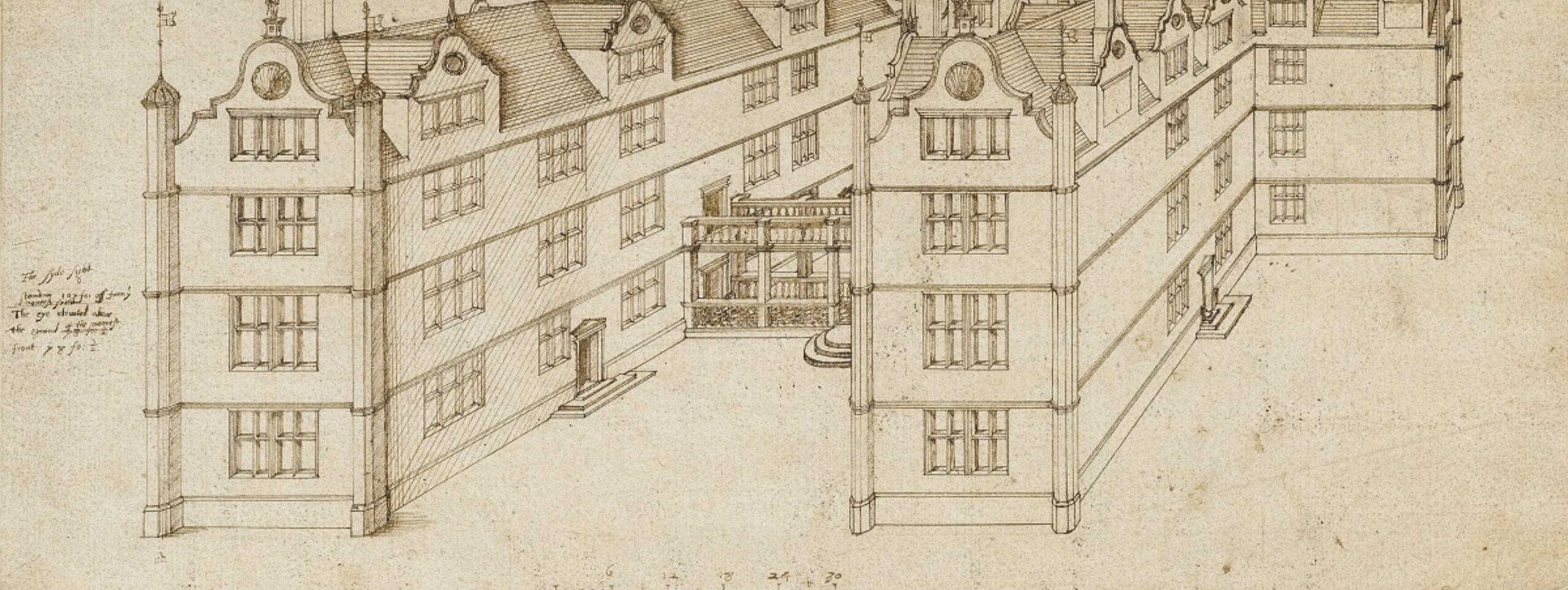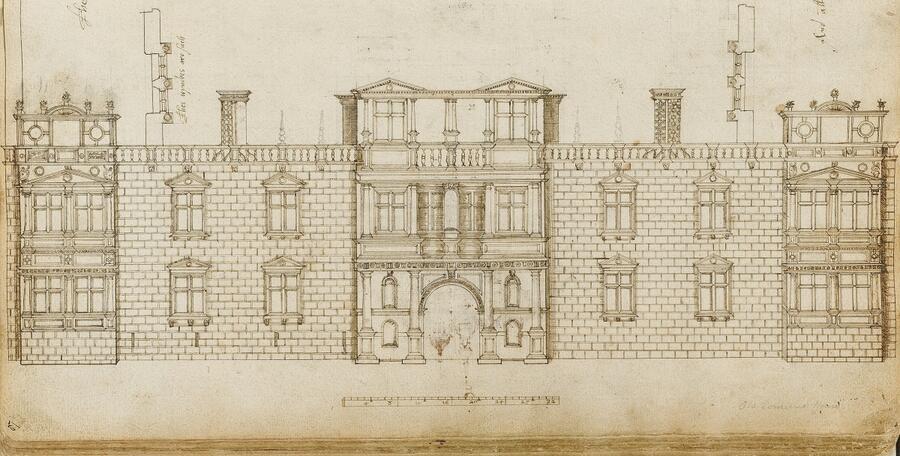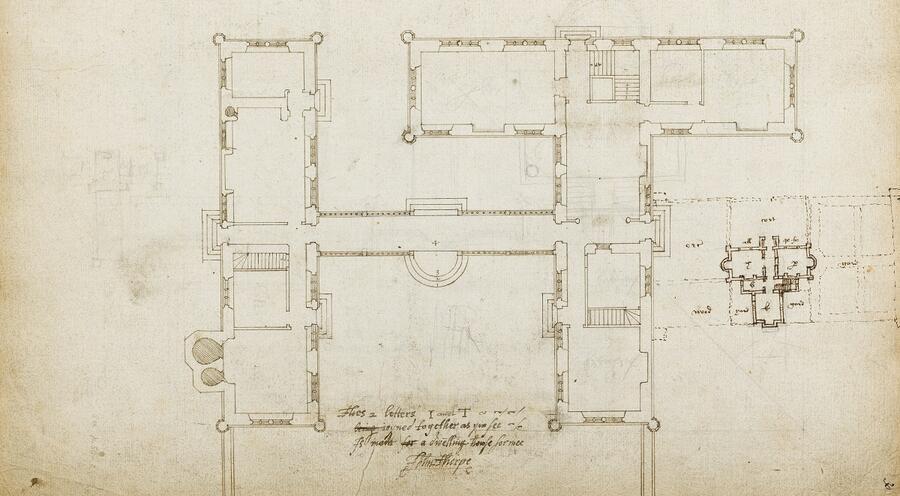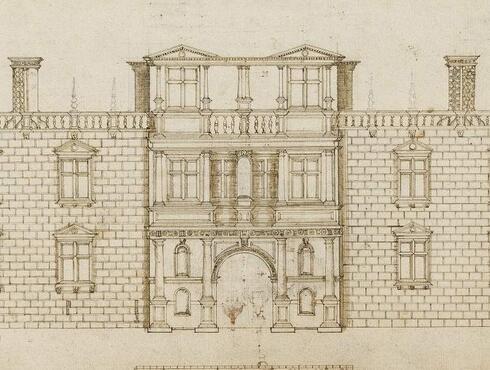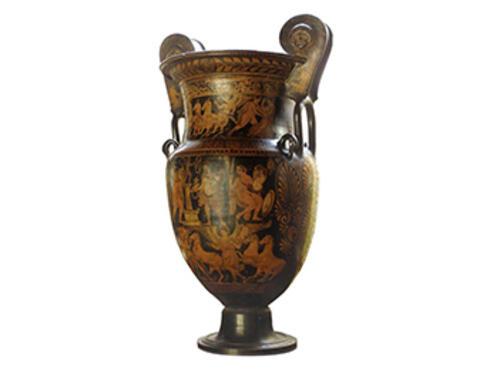The importance of the Soane Museum’s Thorpe album and its potential for a broader understanding of the period cannot be overstated, as it is ‘perhaps the most important relic in existence of architectural drawings and designs in the reigns of Elizabeth and James I’ (Summerson, 1964-66). It is in fact one of only two such collections extant. The other is the Smythson Collection at the Royal Institute of British Architects, it too first catalogued in the 1960s, by Mark Girouard, and currently being reassessed and re-catalogued Olivia Horsfall-Turner (V&A/RIBA Drawings Curator). This attests to the timely nature of this project, enriched by the potential of sharing expertise.
Specificity and originality
Thorpe’s relevance within a defining moment in British architecture is paramount. The period sees the establishment of what we might call a truly English style, characterised by an eclectic and highly experimental mixture of vernacular and continental features, so splendidly expressed, for instance, by the likes of Wollaton Hall (1580s), Nottinghamshire, or indeed in one of Thorpe’s plans for his own house, devised as ‘IT’, after his (Latin) initials. Yet, despite Summerson’s pivotal, if by now clearly outdated catalogue of the drawings, and a number of subsequent studies touching, inter alia, on Thorpe’s scholarly activities – namely the English translation of Hans Blum’s treatise (published in 1601 by Hans Woutneel as ‘The Booke of Five Columnes of Architecture’), and the manuscript translation of Du Cerceau’s 1576 edition of ‘Leçons de Perspective Positive’ – Thorpe is still described primarily as a land surveyor (Colvin, ‘A Biographical Dictionary of British Architects 1600-1840’, 2008). Equally, the period still suffers from an historical characterisation as 'insular' or 'backward' in comparison to great Renaissance centres such as Florence or Rome.
My book on ‘London’s ‘Golden Mile’: The Great Houses of the Strand, 1550-1650’ (2021) shows how this is anything but. It also reconsiders instances of Thorpe’s work within the competitive galaxy of the capital, alongside the biggest names in the building trade of the day. As previously remarked, however, a full understanding of his role as an architect requires a new comprehensive analysis of all the drawings, which still present formidable problems of classification and identification, and many un-answered questions: which are surveys of existing buildings or copies of designs for buildings by others? Which are original designs by Thorpe, and of these, which were made for his own amusement (or possibly for an intended publication, planned but never achieved), and which for actual buildings? And of the latter, which were offered to potential patrons on spec, and which actually commissioned?
